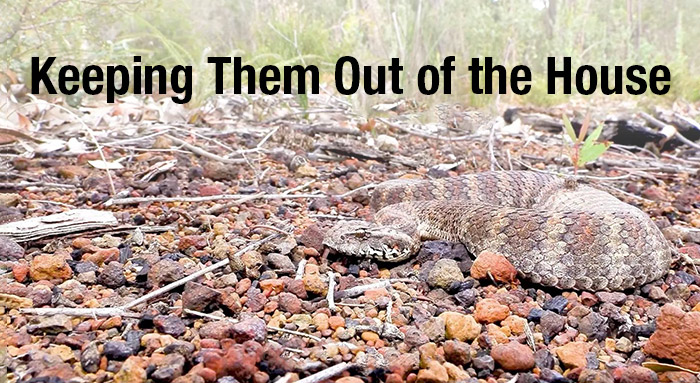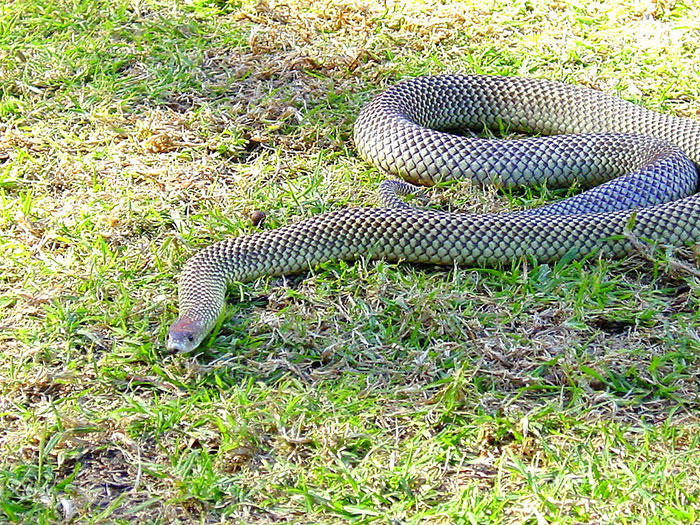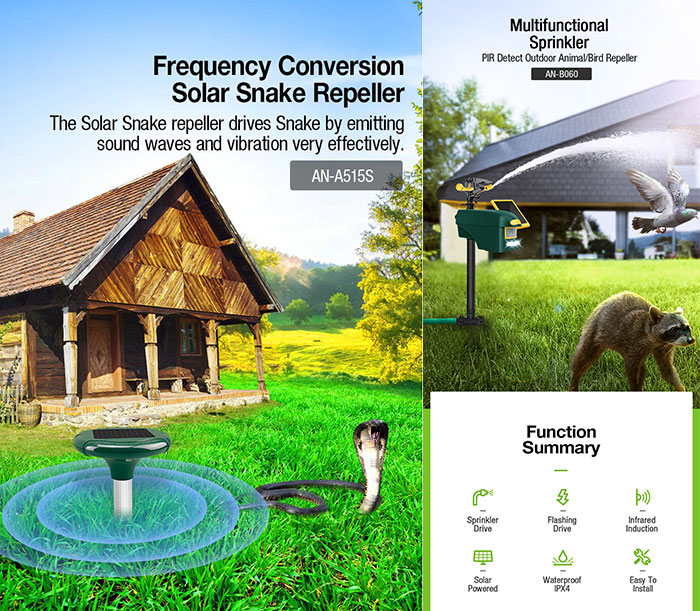
For homeowners, property managers, and businesses across Australia, the presence of venomous snakes is more than just a nuisance; it's a genuine safety, operational, and liability issue. The standard fear response is being replaced by a more pressing and specialized question: What is the most effective, evidence-based framework for addressing the snake problem?
Table of contents
Why are there so many snakes in Australia?
Why Snakes Are in Your House or Garden
The Dangers Snakes Present to People
How to Keep Snakes Out of Your House and Garden
Absolutely Don'ts:
Why are there so many snakes in Australia?
No strong competitors:
First, the Australian continent began to separate from other continents approximately 55 million years ago. Unlike other continents (such as Asia and the Americas), Australia did not gain access to large carnivorous mammals (such as tigers and leopards) after its isolation. This allowed reptiles, especially snakes, to occupy key positions as top and mid-level predators in the ecosystem without facing significant competition.
An ideal climate and environment:
Second, Do snakes hibernate,Normally, yes,But the warm to hot climate across much of Australia provides snake coral snake with a long active period and extremely high metabolic efficiency. They do not need the long hibernation periods required in colder regions. Australia boasts an extremely diverse range of ecological environments, from humid tropical rainforests and fertile coastal areas to dry deserts and scrubland. Different snake species have adapted to these diverse ecological niches, promoting species diversification and reproduction.
A Plenty of Food Sources:
Australia provides a wide variety of snakes, especially venomous ones, with a rich supply of prey, particularly rodents (such as mice). These rodents are abundant in agricultural areas and natural habitats, and form the primary diet of many medium-sized venomous snakes (such as brown snakes and tiger snakes,water moccasin snake). Furthermore, an abundant supply of birds, bird eggs, lizards, other snakes, and even small marsupials form a large and complex food web that supports the entire snake population.

Why Snakes Are in Your House or Garden
Food and Water
Rodent Paradise: If your yard or garage is infested with mice and rats, it's a buffet for snakes. Mice are a staple food for many common venomous snakes (such as the eastern brown snake).
Frog Feast: If a nearby water source (such as a pond or standing water) attracts frogs, frog-eating snakes (such as tree snakes) will also be attracted. Birds and Lizards: Birdhouses and bird feeders attract small birds, while bushes and rock piles provide havens for lizards—all potential prey for snakes.
Water Sources: Pet water bowls, leaky faucets, air conditioner drip trays, and even inflatable pools forgotten by children after playtime can be valuable water sources for snakes in dry weather.
Perfect Shelter
Snakes need sheltered areas to avoid predators, regulate their body temperature, and rest.
Cluttered Backyards: Stacked wood, building materials, discarded steel sheets, or tiles can provide ideal hiding places and nesting areas for snakes.
Dense Vegetation: Long, unmowed grass, dense shrubs, and ground cover all provide ideal hiding places for snakes.
Warm Surfaces: On cool mornings, concrete driveways, asphalt pavement, or metal sheets left out in the open absorb the sun's heat, and snakes like to bask in these areas to raise their body temperature. Sheltering Spaces: Underground spaces, garage corners, and the interiors of sheds offer ideal habitats that are dark, quiet, and undisturbed.
The Accidental "Visitor"
Sometimes, a snake's arrival is unplanned, but rather a matter of chance.
Chasing Prey: A snake may inadvertently follow a mouse or lizard into a house through a crack in a door, window, or vent while pursuing it.
Weather-Driven: During extremely hot weather, snakes may seek shade; during heavy rain or bushfires, they may be forced from their original habitats to migrate to dry, safer residential areas.
The Dangers Snakes Present to People
Threats to people's lives and property
The most bites and fatalities are not caused by the most venomous inland taipans, but by eastern brown snakes and tiger snakes, which have a high overlap with human habitats. Serious Sequelae: Even after successful treatment, some victims may suffer long-term sequelae such as tissue necrosis, muscle weakness, chronic fatigue, and even amputation, which can have a lasting impact on their quality of life. Developing, producing, and maintaining a national stockpile of serums that cover all native venomous snakes is a significant public health investment. Every snake bite involves an ambulance call, emergency room treatment, and potential hospitalization, consuming significant medical resources.
Fatal Threat to Pets
This is the most immediate and distressing threat to many Australian families. Dogs, due to their curiosity, often use their noses to sniff, making them vulnerable to facial bites. Pets bitten by venomous snakes require urgent veterinary care and injections of specialized animal antivenom, which is very expensive and leaves a very short window for rescue. On farms, snakes prey on chicks, ducklings, eggs, and sometimes even kill young cattle and sheep, causing direct economic losses to farmers.
Psychological Fear and Life Interference
Fear of snakes is deeply ingrained in human genes. This fear can lead people to be hesitant to work in the garden, let children play on the grass, or engage in outdoor activities like hiking and camping. In areas with a high prevalence of snakes, residents may need to be constantly vigilant during the summer, checking garages, sheds, and even inside shoes. This constant vigilance can cause psychological stress.
how to get rid of snakes in House and Garden
1. Disrupt the Food Chain (The Most Critical Step)
Control Rodents: Keep garbage cans sealed and don't leave pet food outdoors for extended periods. If you notice rodent activity, use a mousetrap or seek professional extermination. Without food, snakes won't stay long.
Manage Birds: Seeds dropped from bird feeders attract mice and lizards, both of which are prey for snake. Consider placing bird feeders away from the house or temporarily stopping feeding.
2. Remove Shelters (To Eliminate Snake Hideouts)
Yard Tidying: Remove piles of wood, bricks, waste, and leaf litter. These are perfect hiding places for snakes and their prey.
Elevate Storage: If firewood must be stacked, use supports to keep it at least 30 cm off the ground and away from the main structure of the house.
Trim Vegetation: Mow the lawn regularly to prevent overgrown weeds. Trim back the base of shrubs to allow air and light underneath, eliminating snakes' access routes.
3. Remove Water Sources
Repair leaking faucets. Empty any standing water from areas like flower pots and children's pools.
4. Install a professional snake-proof net
Material: Use strong stainless steel or rigid plastic mesh.
Specifications: Mesh diameter should be no larger than 6 mm (0.6 cm). The fence should be at least 1 meter high and sunk at least 15-20 cm into the ground to prevent snakes from entering from below.
Design: Optimally, the top of the fence should be angled outward at a 30-45 degree angle, effectively preventing snakes from climbing over.
5. Seal entrances to your home
Carefully inspect cracks and holes in your foundation and walls, and fill them with cement, wire mesh, or steel wool. Ensure window screens are free of holes. Install seals under doors to seal off any entrances to the mezzanine floor below.
6. Use a snake repellent product—Aosion Solar Snake Repeller or Vibrating Snake Repeller

snake deterrent are powered by solar energy and use sound waves to repel harmful snakes. They effectively repel snakes by emitting sound waves and converting the frequency of the sound waves. The sound waves stimulate them, stimulating them to simulate danger and driving them away from the area.
What should you do if you've already encountered a snake?
Never attempt to capture, kill, or provoke it yourself! Most bites occur at this point.
Remain calm and back away slowly. Maintain a safe distance of at least 5 meters from the snake.
Monitor its location. Watch where it goes from a distance so you can alert the snake catcher.
Call a professional. Immediately contact a licensed snake catcher for safe removal. You can find them on your local council website or through a search engine.
Absolutely Don'ts:
Do not cut open the wound or try to suck out the venom with your mouth.
Do not clean the wound (residual venom can help doctors identify the snake species).
Do not apply a tourniquet.
Do not move the injured limb or allow the victim to walk.
Despite our best efforts, snakes can still enter our yards and homes. If you have a snake problem, contact your local pest control company who specializes in snake removal. They can help you correctly determine the type of snake you have (venomous vs. non-venomous) and help remove it safely and humanely from your property.GG


